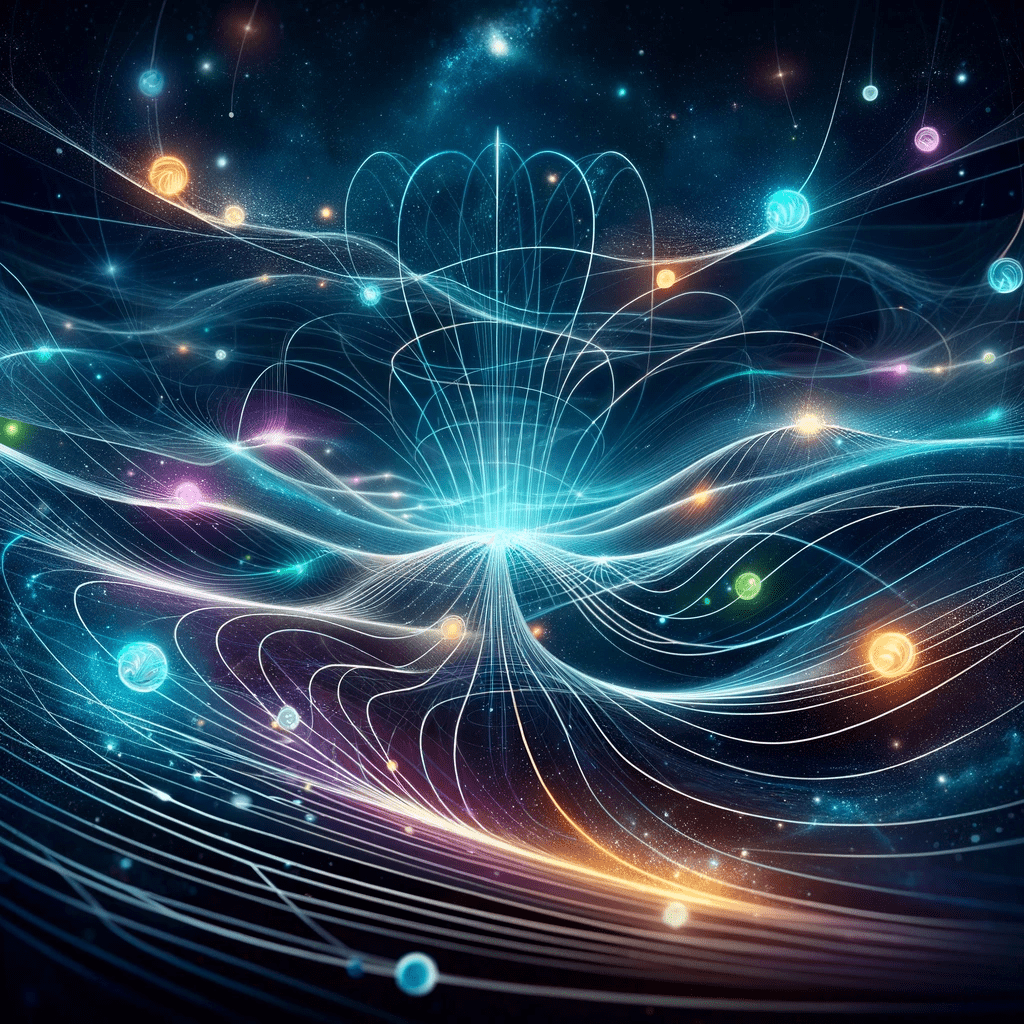String Theory: A Vibrant Dance of Subatomic Strings

String theory, a groundbreaking theoretical framework in modern physics, has its roots in the early 1970s. It attempts to resolve some of the inconsistencies and limitations in our understanding of the fundamental forces and particles that make up the universe. This theoretical framework posits that the smallest building blocks of matter are not point-like particles, but rather one-dimensional strings. These strings vibrate at specific frequencies, and it is these vibrations that give rise to the various fundamental particles and forces.
The idea of string theory emerged as a response to the incompatibilities between general relativity, which describes the behavior of large-scale objects and gravity, and quantum mechanics, which governs the world of subatomic particles. By proposing that everything in the universe, from forces to particles, arises from the vibrations of these strings, string theory offers a unifying perspective that could potentially reconcile the two seemingly incompatible theories.
There are several variants of string theory, with the most prominent being bosonic string theory, supersymmetric string theory, and M-theory. Each of these theories has its own set of rules and assumptions, but they all share the central idea that strings underlie the fabric of reality.
Fact #1: The origin of string theory can be traced back to the works of Gabriele Veneziano, Leonard Susskind, and Yoichiro Nambu, who independently discovered the foundational concepts of the theory in the late 1960s and early 1970s (Source: University of Cambridge Department of Applied Mathematics and Theoretical Physics).
Fact #2: String theory requires the existence of extra dimensions beyond the familiar three dimensions of space and one dimension of time. Most versions of the theory posit the existence of 10 or 11 dimensions (Source: Greene, B. (1999). The Elegant Universe: Superstrings, Hidden Dimensions, and the Quest for the Ultimate Theory. W. W. Norton & Company).
Fact #3: The Large Hadron Collider (LHC) at CERN, the world’s most powerful particle accelerator, has been conducting experiments to find evidence of extra dimensions and other phenomena predicted by string theory (Source: European Organization for Nuclear Research – CERN).
Experts like theoretical physicist Brian Greene, author of the aforementioned book “The Elegant Universe,” have championed string theory as a promising approach to a “Theory of Everything.” Greene argues that the theory provides a unified framework for understanding both general relativity and quantum mechanics, making it a compelling candidate for uncovering the ultimate structure of the cosmos.
String theory has also been the subject of numerous newspaper articles and opinion pieces. The New York Times, for instance, has published articles discussing the significance of the theory and its potential to revolutionize our understanding of the universe.
One of the main challenges in testing string theory is that the energy scales required to observe strings directly are far beyond what current particle accelerators are capable of producing. However, there are several indirect lines of evidence that suggest string theory may be a promising framework for understanding the fundamental laws of physics.
String theory has been shown to be mathematically consistent, and it can predict the existence of gravity, which is not included in the Standard Model of particle physics. Additionally, string theory has been used to provide a framework for explaining some of the puzzles in black hole physics, such as the entropy of black holes.
String theory is a revolutionary theoretical framework that attempts to unify our understanding of the fundamental forces and particles that make up the universe. It has been the subject of significant debate and research since its inception in the early 1970s, with many physicists optimistic about its potential to resolve longstanding issues in physics.

